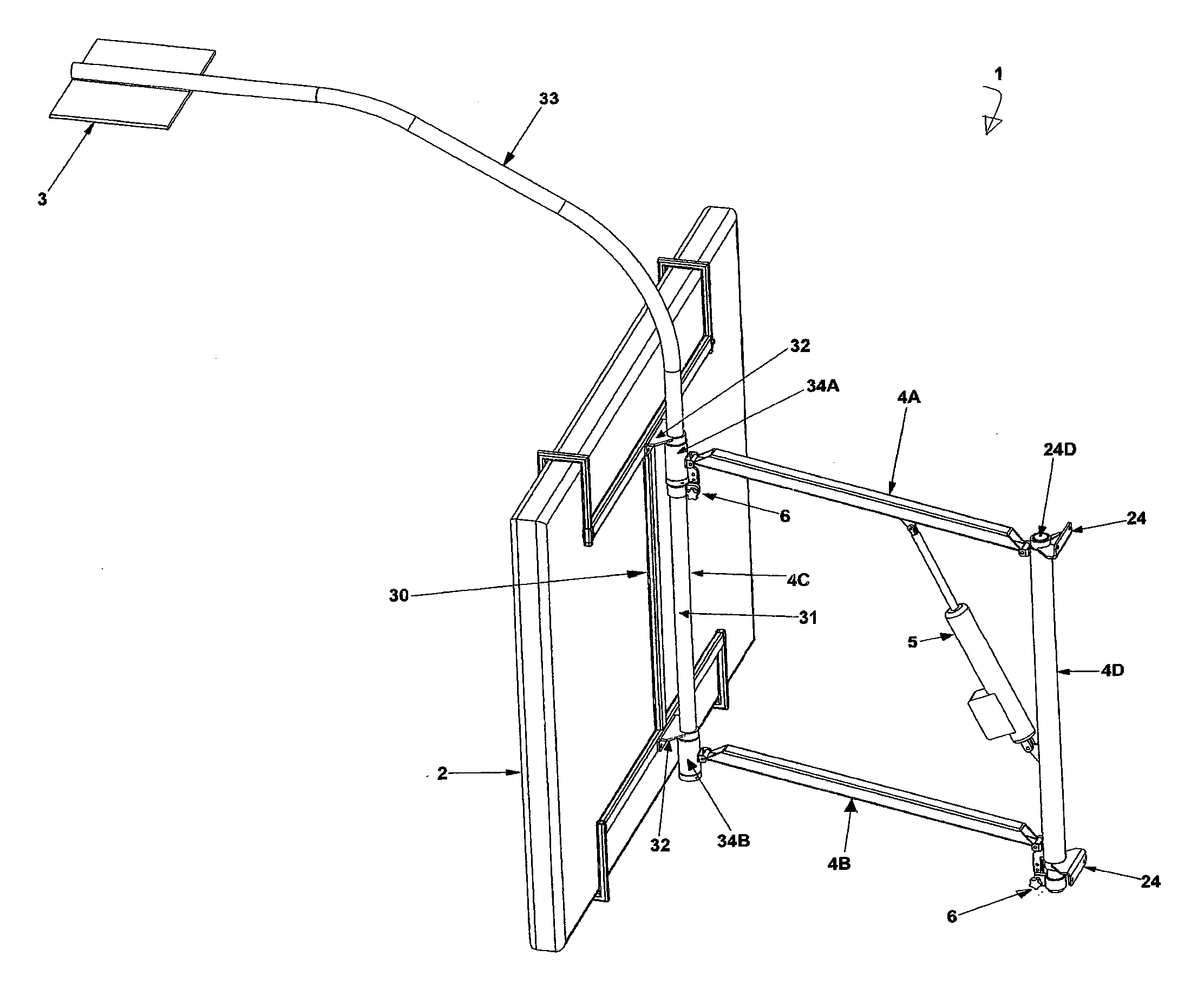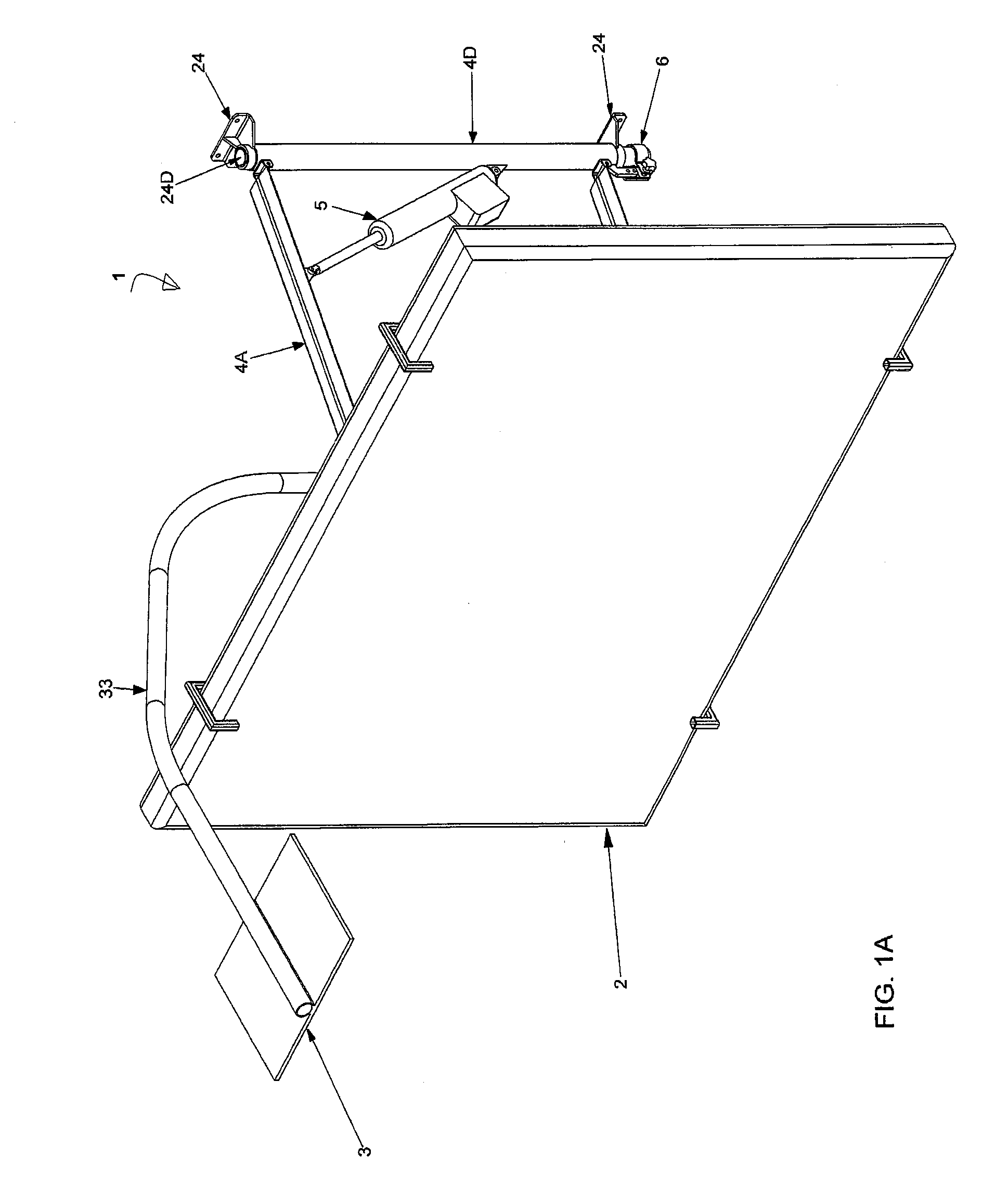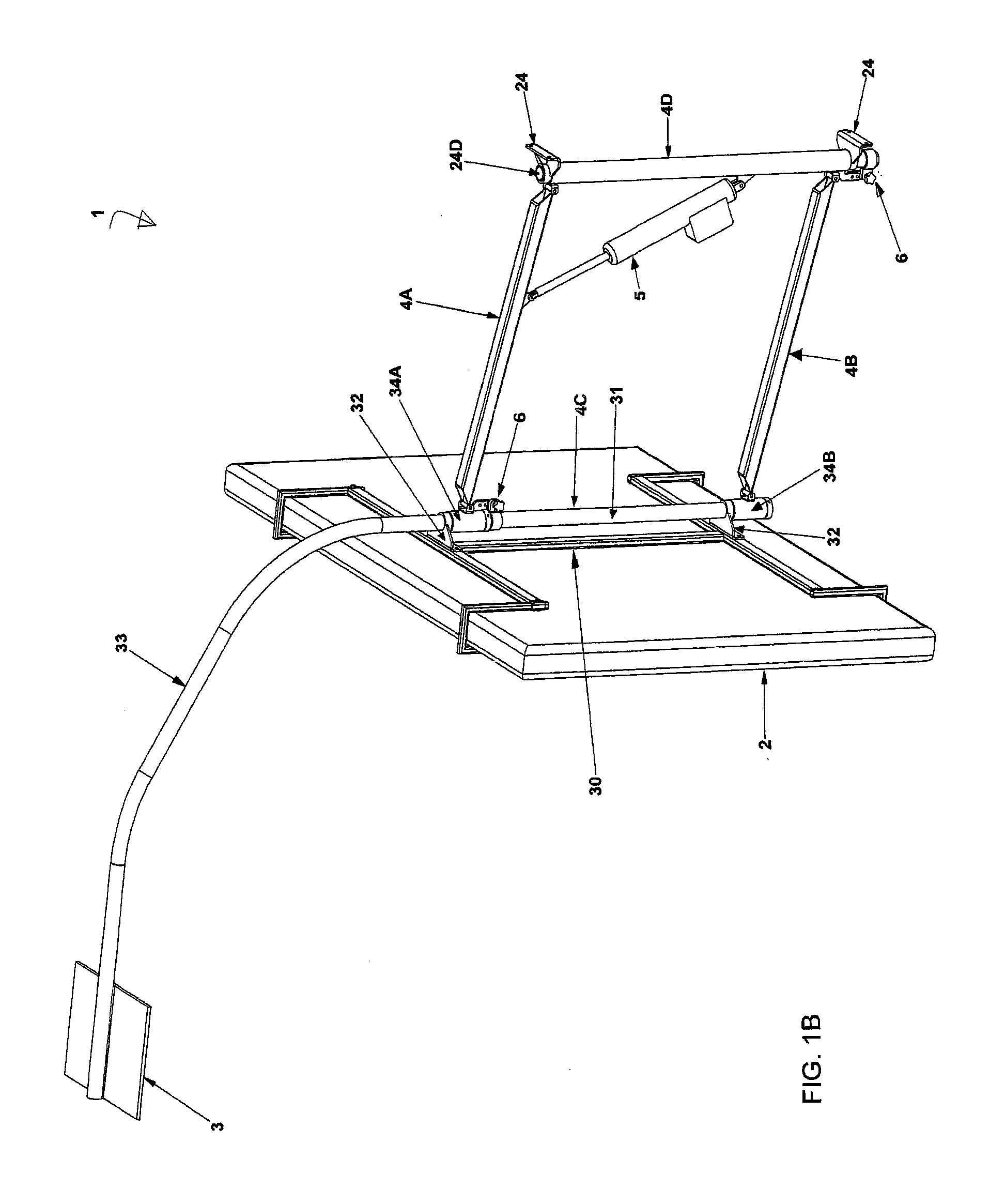Mounting system for an electronic teaching board
a technology for mounting systems and teaching boards, which is applied in the direction of projectors, building scaffolds, domestic objects, etc., can solve the problems of inability to adapt to the changes in the direction of learning, the risk of re-frontalization of education, and the danger of partially losing the achievements of adaptive education, etc., to achieve the effect of increasing the flexibility of the mounting system according to the invention, ensuring the effect of stability and ensuring the stability
- Summary
- Abstract
- Description
- Claims
- Application Information
AI Technical Summary
Benefits of technology
Problems solved by technology
Method used
Image
Examples
Embodiment Construction
[0028]FIGS. 1A and 1B show a first preferred embodiment of mounting system 1 according to the invention. Mounting system 1 is intended for mounting an electronic teaching board 2 on a surface, for instance a wall or a pillar (see FIGS. 2, 3, 6 and 7). Shown as an example of an electronic teaching board is an electronic whiteboard, which will be referred to simply as ‘board’ in the following description.
[0029]Mounting system 1 comprises four legs 4A, 4B, 4C and 4D which are mutually connected for pivoting by means of pivot points S. The resulting pivotable structure is referred to here as a ‘parallelogram’. In the shown preferred embodiment the parallelogram can be fixed in the shown position to a surface (not shown). Legs 4A and 4B extend substantially parallel to each other in a generally horizontal direction. Legs 4C and 4D likewise extend substantially parallel to each other in a generally vertical direction. In the shown preferred embodiment the means for fixing mounting system ...
PUM
 Login to View More
Login to View More Abstract
Description
Claims
Application Information
 Login to View More
Login to View More - R&D
- Intellectual Property
- Life Sciences
- Materials
- Tech Scout
- Unparalleled Data Quality
- Higher Quality Content
- 60% Fewer Hallucinations
Browse by: Latest US Patents, China's latest patents, Technical Efficacy Thesaurus, Application Domain, Technology Topic, Popular Technical Reports.
© 2025 PatSnap. All rights reserved.Legal|Privacy policy|Modern Slavery Act Transparency Statement|Sitemap|About US| Contact US: help@patsnap.com



